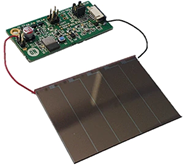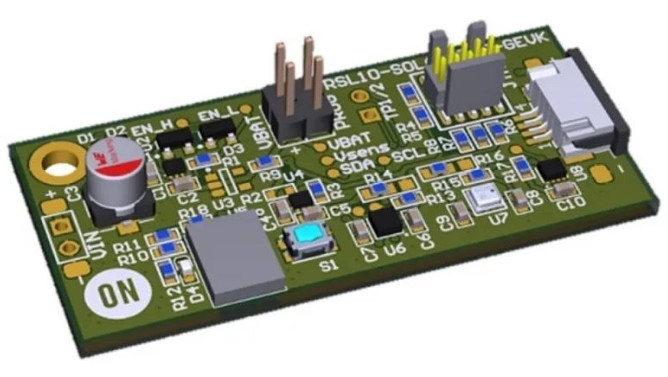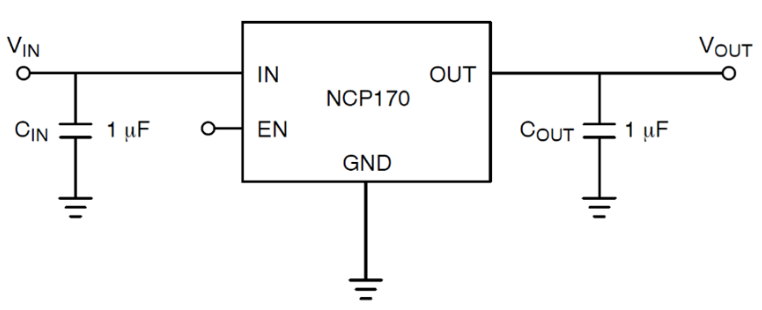
In smart buildings, smart homes and industry 4.0 applications, all kinds of sensors and Internet of things devices need to be widely deployed. If these devices are powered by general batteries, there will be problems of battery replacement. If they can be powered by solar cells, the trouble of battery replacement can be saved, which greatly improves their practicability. This article will introduce the development of solar cells and the functions and features of the multi-sensor platform for solar cells launched by ON
Solar cell technology is advancing rapidly
Solar power generation is one of the most popular renewable energy generation methods. It does not produce greenhouse gases such as carbon dioxide in the process of power generation, so it does not pollute the environment. solar cell is a device that converts sunlight into electricity through photovoltaic effect. It is a photoelectric semiconductor wafer that generates electricity directly from sunlight, also known as "solar chip" or "photocell". As long as it meets certain illuminance conditions, it can output voltage instantly and generate current in the case of a loop.
Simply put, the principle of solar photovoltaics is a power generation method that uses solar cells to absorb sunlight with a wavelength of 0.4μm ~ 1.1μm (for silicon crystals) and convert light energy directly into electricity output. Because the electricity generated by solar cells is direct current, so if you need to provide power to household appliances or various electrical appliances, you need to install a direct/AC converter, replaced by AC, to power to the home or industrial electricity.
Solar cells in consumer goods most of the charging on the problem, the past general charging object using nickel metal hydride or nickel cadmium dry batteries, but nickel metal hydride dry batteries can not resist high temperature, nickel cadmium dry batteries have environmental pollution problems. At present, supercapacitors develop rapidly, with large capacity but smaller area and low price. Therefore, some solar products begin to use supercapacitors as charging objects, thus improving many problems of solar charging.

Solar cells solve the problem of power supply for equipment
In smart buildings, smart homes, and Industry 4.0 applications, a variety of sensors and Internet of Things (IoT) devices are used to collect and transmit environmental data. These devices are often powered by batteries or mains power. This creates a lot of problems when deploying these devices, which may have to be located outdoors where mains power is difficult to reach. If the general battery power supply is used, even if the equipment is extremely power-saving, there will still be a time when the battery runs out, and it must cost manpower and time to replace the battery, which brings a considerable challenge to the practicability of the construction of these equipment.
Solar cells would solve the problem of powering these sensors and iot devices by converting light from solar panels to electricity and storing excess power in batteries that can continuously power devices at night. In this way, these devices will no longer have power problems, which will significantly reduce the cost of building smart buildings, smart homes and applications such as Industry 4.0.

Battery-free solar cell multi-sensor platform
For solar cell applications, Anson launched the RSL10 Solar Cell Multi-sensor Platform (RSL10-Solarsens-Gevk), which is a comprehensive development platform for battery-free Internet of Things applications in smart buildings, smart homes and industry 4.0 verticals. It is a complete set of low-cost solutions. It can be used to develop sensor nodes that collect solar energy and power themselves. It is based on RSL10 SIP (System−in−Package), the lowest power Bluetooth 5 radio in the industry. The RSL10 solar cell multi-sensor platform supports continuous BLE (Bluetooth Low Energy, without any battery. Bluetooth Low Power) to transmit sensor information. This fully integrated platform features multiple smart sensors for environmental and motion sensing, including an ultra-low static current LDO regulator (NCP170) and a 2-port connector for solar cells. It also includes a low weight, thin 47 μF storage capacitor, and a programming and debugging interface. And a connected solar cell.
Since the platform draws energy from low current sources, it will be important to minimize leakage throughout the system during operation and standby. Along with other energy saving devices, the ultra-low static current LDO (NCP170) on the circuit board significantly reduces leakage, with a power consumption of 55 nw, 10 mW Rx, and 0 dbm Tx in standby mode. Supports Beacon and telemetry transmission and can be fully reprogrammed using SEGGER J-Link with Arm® Cortex® debug connector (10-pin) adapter with ultra-low leakage, adaptive duty cycle (self-detection of transmission power availability), And dual solar cell interface (through hole welding wire or ZIF interface).
The RSL10 solar cell multi-sensor platform is paired with a variety of ultra-low power smart sensors, including a low voltage, high precision temperature sensor (NCT203) with a wide temperature range (-40 to 125℃) and a combined digital humidity, pressure and temperature sensor (BME280). There is also a smart 3-axis ultra-low power accelerometer (BMA400) with integrated wake and sleep functions, pre-brush interwoven Beacon firmware, including the Eddystone TLM Beacon, which supports broadcast storage capacitor voltage levels, temperature, time since power-on and advertising packets since power-on, Compatible with the BLE Scanner app (iOS or Android), support for custom environmental service Beacon, support for broadcast temperature, humidity and pressure, and software library and examples in the B-IDK CMSIS-Pack to support a wide range of lighting conditions (artificial or solar, As low as 180 lux).
The panel is powered by solar cells. The default solar cell used is Panasonic Amorton AM−1522, with a typical operating voltage of 3 V. The circuit is protected by 3 V clamp, working domain 1.6V to 2.65V, when below 1.6V does not allow transmission, the device is collecting energy; When the voltage is higher than 2.65V, the device starts operating and uses up the energy buffer to 1.6V.
The RSL10 solar cell multi-sensor platform can be used in a wide range of smart home/building applications, environmental sensing (heating/cooling, air quality), intrusion detection, environmental and climate control, Industry 4.0 / smart cities, worker safety and fall detection, air quality monitoring, smoke detection, mobile personal care, integrated/portable sensors, smart safety helmets (self Cars, motorcycles) and other fields.

A number of low power devices and development tools to build the development platform
RSL10 solar cell multi-sensor platform uses a number of important devices, including the RSL10 wireless RF transceiver launched by Anson is a radio SoC, support Bluetooth 5.2 authentication, SDK 3.7, RSL10 can bring ultra-low power BLE for wireless applications, support for advanced wireless functions, Optimize system size and battery life. The highly integrated radio SoC features a dual-core architecture and 2.4GHz transceiver with flexibility to support BLE and 2.4GHz custom protocols. RSL10's software development Kit (SDK) enables rapid development of ultra-low-power BLE applications by leveraging easy access from Blinky for abstractions, drivers, and sample applications to complete BLE peripherals, and the required tools in between.
Key features of the SDK include a free Eclipse based onsemi IDE, support for Keil μVision and IAR Embedded Work Bench, complete BLE protocol stack, And comes with FOTA (Wireless Firmware) for Android™ and iOS apps, with support for FreeRTOS.
In terms of smart sensors, including Bosch Sensortec's BMA400 triaxial acceleration sensor is the first true ultra-low power acceleration sensor. Therefore, the BMA400 is particularly suitable for wearable devices that require long-lasting battery life. In addition, it is an ideal solution for smart home applications, such as smart indoor climate systems and smart home security systems. By distinguishing between emergency situations and false signals, the new acceleration sensor can avoid false alarms.
The BME280 from Bosch Sensortec is a humidity sensor that measures relative humidity, atmospheric pressure and ambient temperature, developed specifically for mobile applications and wearables where size and low power consumption are key design parameters. The device combines high linearity and high precision sensors, ideal for low current consumption, long-term stability, and high EMC stability. The humidity sensor provides extremely fast response times and therefore supports performance requirements for emerging applications, such as situational awareness and providing high precision sensing over a wide temperature range.
The NCT203 temperature sensor from ON is a digital thermometer and cryogenic/overtemperature alarm designed for thermal management systems requiring low power consumption and size. The NCT203 operates in a power range of 1.4V to 2.75V, making it available for a wide range of applications including low power devices.
ON's NCP170 Linear Voltage regulator (LDO) series CMOS low voltage differential voltage regulator is designed for portable battery powered applications requiring ultra-low static current. The typical value of 500 nA ultra-low power consumption ensures long battery life, and the dynamic transient boost function improves device transient response for wireless communication applications. The device is available in small 1 × 1 mm xDFN4, TSOP5, and SOT-563 packages.